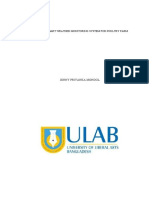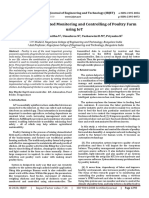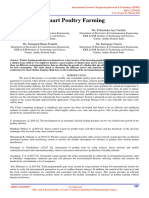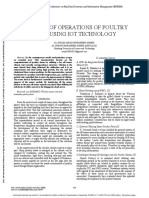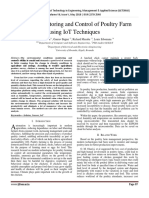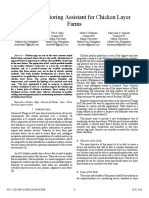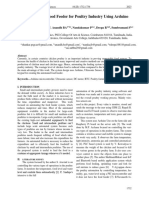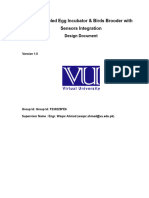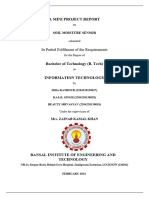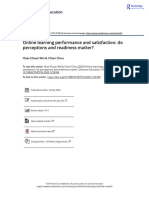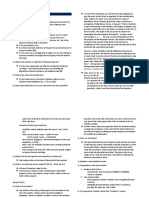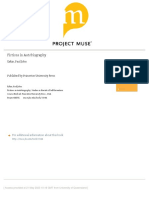0% found this document useful (0 votes)
194 views5 pagesIoT Poultry Environment Monitoring
This document proposes an IoT-based system to monitor the environment of a poultry house. The system would monitor parameters like temperature, humidity, oxygen, carbon dioxide, and ammonia levels using wireless sensor nodes. The sensors would collect data and send it to a coordinator node connected to the internet, allowing remote monitoring and control of the poultry farm environment. The goal is to improve poultry health and farm profits by carefully controlling the indoor climate through an automated IoT system.
Uploaded by
M HasanCopyright
© © All Rights Reserved
We take content rights seriously. If you suspect this is your content, claim it here.
Available Formats
Download as PDF, TXT or read online on Scribd
0% found this document useful (0 votes)
194 views5 pagesIoT Poultry Environment Monitoring
This document proposes an IoT-based system to monitor the environment of a poultry house. The system would monitor parameters like temperature, humidity, oxygen, carbon dioxide, and ammonia levels using wireless sensor nodes. The sensors would collect data and send it to a coordinator node connected to the internet, allowing remote monitoring and control of the poultry farm environment. The goal is to improve poultry health and farm profits by carefully controlling the indoor climate through an automated IoT system.
Uploaded by
M HasanCopyright
© © All Rights Reserved
We take content rights seriously. If you suspect this is your content, claim it here.
Available Formats
Download as PDF, TXT or read online on Scribd
/ 5
